
A magnetohydrodynamic drive or MHD accelerator is a method for propelling vehicles using only electric and magnetic fields with no moving parts, accelerating an electrically conductive propellant with magnetohydrodynamics. The fluid is directed to the rear and as a reaction, the vehicle accelerates forward.

The Naval Undersea Warfare Center (NUWC) is the United States Navy's full-spectrum research, development, test and evaluation, engineering and fleet support center for submarines, autonomous underwater systems, and offensive and defensive weapons systems associated with undersea warfare. It is one of the corporate laboratories of the Naval Sea Systems Command. NUWC is headquartered in Newport, Rhode Island and has two major subordinate activities: Division Newport and Division Keyport in Keyport, Washington. NUWC also controls the Fox Island facility and Gould Island. It employs more than 4,400 civilian and military personnel, with budgets over $1 billion.
The vortex tube, also known as the Ranque-Hilsch vortex tube, is a mechanical device that separates a compressed gas into hot and cold streams. The gas emerging from the hot end can reach temperatures of 200 °C (390 °F), and the gas emerging from the cold end can reach −50 °C (−60 °F). It has no moving parts and is considered an environmentally friendly technology because it can work solely on compressed air and does not use Freon. Its efficiency is, however, low, contradicting the environmental advantages.
Robert George Jahn was an American plasma physicist, Professor of Aerospace Science, and Dean of Engineering at Princeton University. Jahn was also a founder of the Princeton Engineering Anomalies Research Lab (PEAR), a parapsychology research program which ran from 1979 to 2007.

Marine engineering is the engineering of boats, ships, submarines, and any other marine vessel. Here it is also taken to include the engineering of other ocean systems and structures – referred to in certain academic and professional circles as “ocean engineering.”
Arthur Henry Lefebvre was a British scientist and an innovative leader in the science and engineering of fuel sprays and combustion in gas turbines.

Mohamed Gad-el-Hak is an engineering scientist. He is currently the Inez Caudill Eminent Professor of biomedical engineering and professor of mechanical and nuclear engineering at Virginia Commonwealth University.
Gretar Tryggvason is Department Head of Mechanical Engineering and Charles A. Miller Jr. Distinguished Professor at Johns Hopkins University. He is known for developing the front tracking method to simulate multiphase flows and free surface flows. Tryggvason was the editor-in-chief of Journal of Computational Physics from 2002–2015.
Wei ShyyJP is an aerospace engineer who served as the 4th President of the Hong Kong University of Science and Technology (HKUST) from 2018 to 2022 with his acting presidency starting from 1 February 2018. He also holds a concurrent appointment as Chair Professor of Mechanical & Aerospace Engineering. He first joined HKUST in August 2010 as Provost.
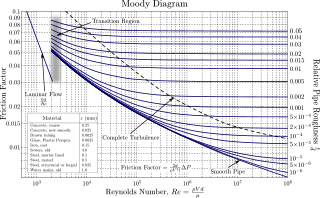
Lewis Ferry Moody was an American engineer and professor, best known for the Moody chart, a diagram capturing relationships between several variables used in calculating fluid flow through a pipe. He has 23 patents for his inventions. He was the first Professor of Hydraulics in the School of Engineering at Princeton.
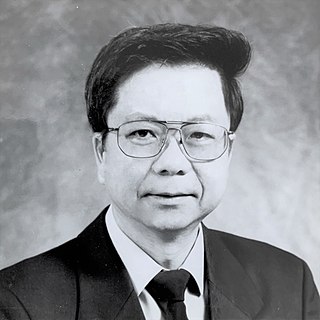
Chih-Ming Ho (何志明) is an engineering professor in interdisciplinary fields, which span from aerodynamics to AI-medicine[1]. He received a B.S. in Mechanical Engineering from National Taiwan University in 1967 and a Ph.D. in Mechanics and Material Sciences from Johns Hopkins University in 1974.
Naomi Ehrich Leonard is the Edwin S. Wilsey Professor of Mechanical and Aerospace Engineering at Princeton University. She is the director of the Princeton Council on Science and Technology and an associated faculty member in the Program in Applied & Computational Mathematics, Princeton Neuroscience Institute, and the Program in Quantitative and Computational Biology. She is the founding editor of the Annual Review of Control, Robotics, and Autonomous Systems.
William Kenneth George is an American-born fluid dynamicist holding both American and Swedish citizenships. He is currently senior research investigator in the Department of Aeronautics at Imperial College London. George is known for his research on both theoretical and experimental turbulence.
Stanley Corrsin was an American physicist, fluid dynamicist, and Theophilus Halley Smoot Professor of Engineering at the Johns Hopkins University. He was known for his contributions in the field of fluid dynamics in general and turbulence in particular. He was a recipient of Fluid Dynamics Prize in 1983. Corrsin died of cancer on 2 June 1986 at the age of 66.
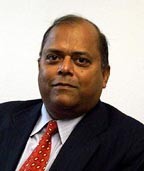
Ramesh K. Agarwal is the William Palm Professor of Engineering in the department of Mechanical Engineering and Materials Science at Washington University in St. Louis. He is also the director of Aerospace Engineering Program, Aerospace Research and Education Center and Computational Fluid Dynamics Laboratory at WUSTL. From 1994 to 1996, he was the Sam Bloomfield Distinguished Professor and Chair of Aerospace Engineering department at Wichita State University in Wichita, Kansas. From 1996 to 2001, he was the Bloomfield Distinguished Professor and the executive director of the National Institute for Aviation Research at Wichita State University. Agarwal received Ph.D in Aeronautical Sciences from Stanford University in 1975, M.S. in Aeronautical Engineering from the University of Minnesota in 1969 and B.S. in Mechanical Engineering from Indian Institute of Technology, Kharagpur, India in 1968.

George Em Karniadakis is a professor of applied mathematics at Brown University. He is a Greek-American researcher who is known for his wide-spectrum work on high-dimensional stochastic modeling and multiscale simulations of physical and biological systems, and is a pioneer of spectral/hp-element methods for fluids in complex geometries, general polynomial chaos for uncertainty quantification, and the Sturm-Liouville theory for partial differential equations and fractional calculus.

Joseph Katz is an Israel-born American fluid dynamicist, known for his work on experimental fluid mechanics, cavitation phenomena and multiphase flow, turbulence, turbomachinery flows and oceanography flows, flow-induced vibrations and noise, and development of optical flow diagnostics techniques, including Particle Image Velocimetry (PIV) and Holographic Particle Image Velocimetry (HPIV). As of 2005, he is the William F. Ward Sr. Distinguished Professor at the Department of Mechanical Engineering of the Whiting School of Engineering at the Johns Hopkins University.
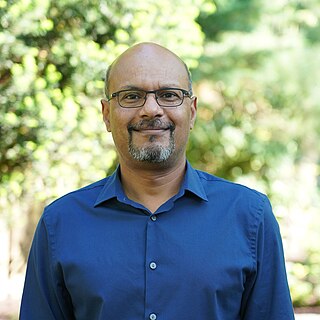
Rajat Mittal is a computational fluid dynamicist and a professor of mechanical engineering in the Whiting School of Engineering at Johns Hopkins University. He holds a secondary appointment in the Johns Hopkins University School of Medicine. He is known for his work on immersed boundary methods (IBMs) and applications of these methods to the study of fluid flow problems.
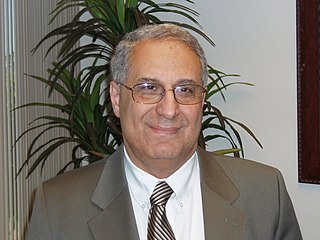
Reda R. Mankbadi is the founding Dean of the Engineering College at Embry-Riddle Aeronautical University. He is a former NASA senior scientist at NASA's Glenn Research Center and a Fellow of the NASA Lewis Research Academy. Mankbadi has published over 150 scientific papers.

Ali Galip Ulsoy is an academic at the University of Michigan (UM), Ann Arbor, where he is the C.D. Mote, Jr. Distinguished University Professor Emeritus of Mechanical Engineering and the William Clay Ford Professor Emeritus of Manufacturing.












